Lurgan archaeologists find evidence of gold and silver production
- Published

Evidence of the production of gold and silver ingots has been uncovered at the site
The team behind an archaeological dig near Lurgan, County Armagh, believe they have discovered evidence of the production of gold and silver ingots.
They have also found signs of metal and glass working and described it as a "higher status site".
This is the second year of excavations at the site, known as Kilmocholmóg (Church of my little Colman).
Last year's week-long exploratory dig found evidence of a medieval settlement.
David Weir of Craigavon Historical Society said the three-week effort uncovered a greater insight into life at the location in the Kilmore Road area over thousands of years.
"It is looking very exciting," he said.
"After last year's excavation we were thinking it was a farmstead - which would have been great.
"But the finds that are turning up suggest that it is a higher status site.
"There is evidence of metal working, glass working and evidence that gold and silver ingots were being made here."
Archaeologist Stuart Alexander said he believed activity on the site was extensive.
"Last year we only opened up a few very small trenches," he said.
"But we've expanded out on that a lot more and we've found a lot more artefacts and archaeological features.
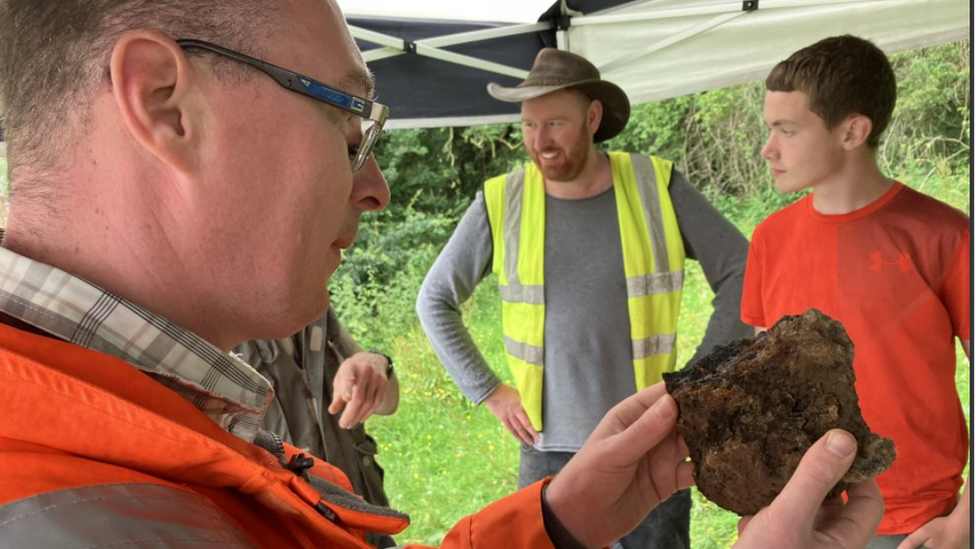
David Weir of Craigavon Historical Society said it is an exciting development
"We are finding some prehistoric activity and early medieval activity.
"So in pre-history, we're looking at the Mesolithic which is about 8000BC right up to the early Christian period of about 400AD.
"It's not unusual on sites to find that people come back over time to the same places and use the same spots.
"All archaeologists want to find gold and I am no different."
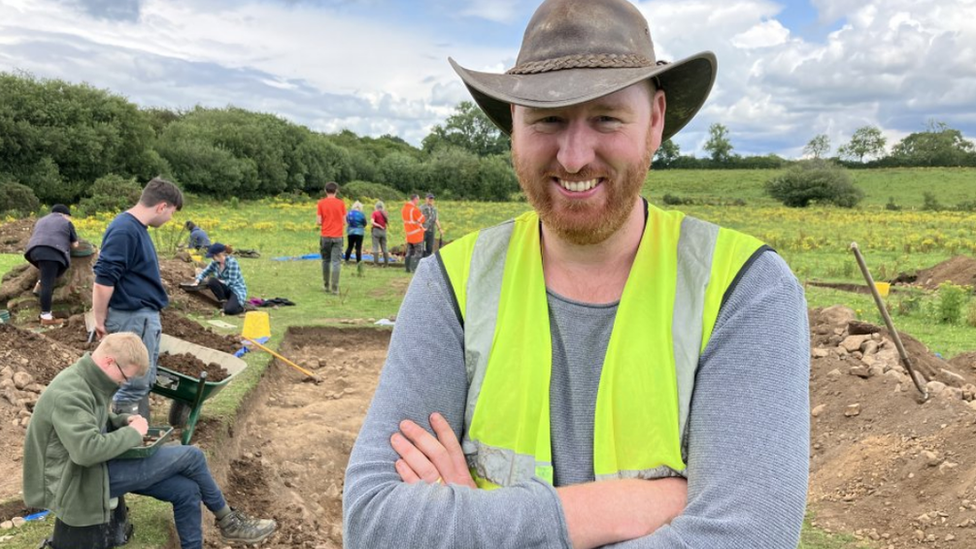
Archaeologist Stuart Alexander believes activity on the site is extensive
Those finds are being discovered by an army of volunteers - with about 300 people taking part this year.
Among them are students Michael Higgins, Zachary McCann and Holly Donaldson.
For Holly, after missing out last year, this was a second opportunity to take part in the dig.
"I saw it posted up last year but I never got around to doing it," she said.
"But then I saw it posted up again this year again and I just decided to come along for a bit of fun to see what I could find."
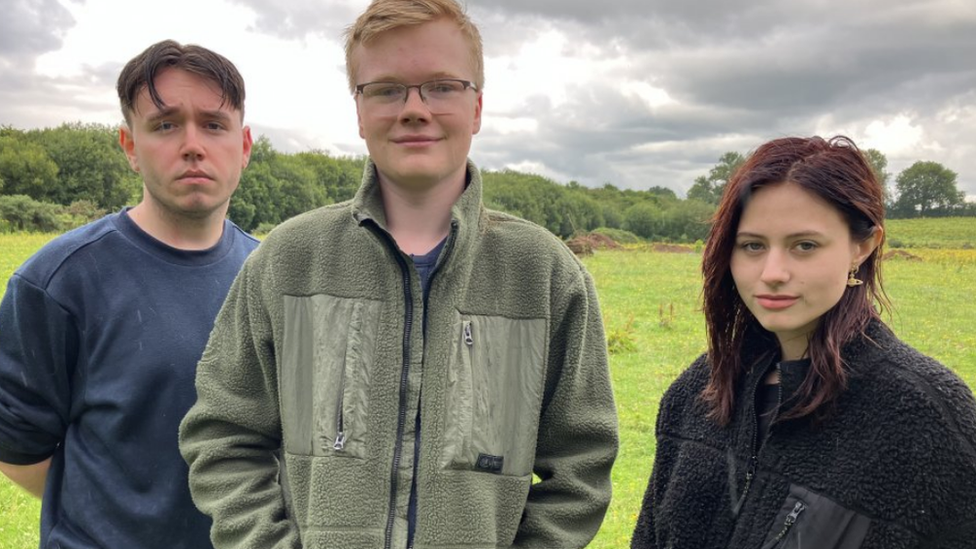
Students Zachary McCann, Michael Higgins and Holly Donaldson are among those involved in the dig
And there have been major finds.
Michael said the highlight was a discovery by Zachary of an ingot mould.
"In 20 minutes he found the ingot mould where they would have poured in the molten ore and made the ingots," he added.
At the time of his great discovery, this was not completely apparent to Zachary.
"Of course I knew what it was," he joked.
"I definitely didn't put it in a pile and think it was a stone only for five minutes later Michael to look at it and say that it was something very important."
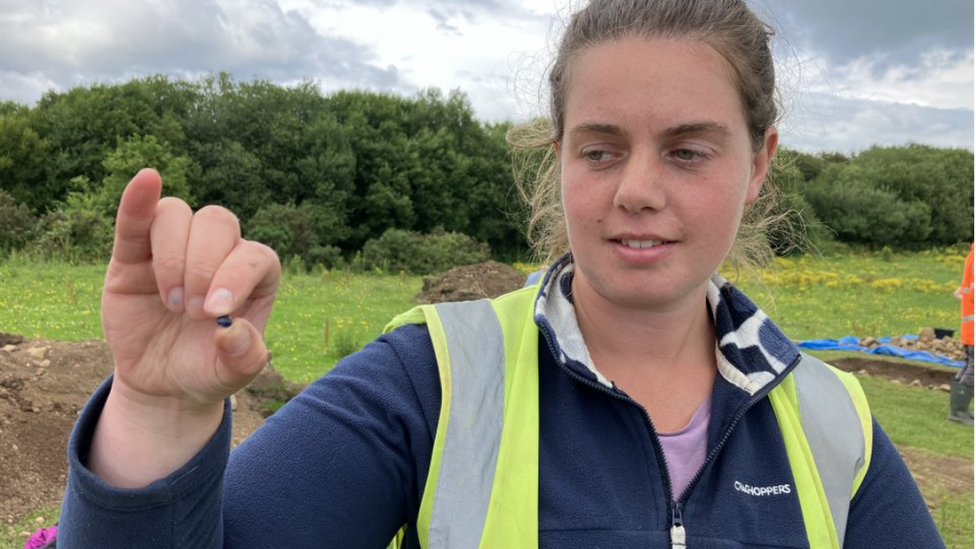
Archaeologist Katy McMonagle says most sites will only yield modest discoveries
Among those on hand to explain what each find means is archaeologist Katy McMonagle.
As well as the ingot mould, Katy is closing guarding a small blue bead she believes was produced on site.
"This is an early medieval blue glass bead which is a lovely find, but also a very personal one as somebody would have been wearing this as part of their jewellery," she said.
It's tempting to think that treasure lies just below every footstep, but before you go digging up your garden, Katy says most sites will only yield modest discoveries.
"In this field it is amazing that we have this archaeology," she said.
"Not everybody's field is going to have something like this.
"But everybody's garden is probably going to have post-medieval pottery, clay pipes - that kind of thing.
"So you never know what you might find."
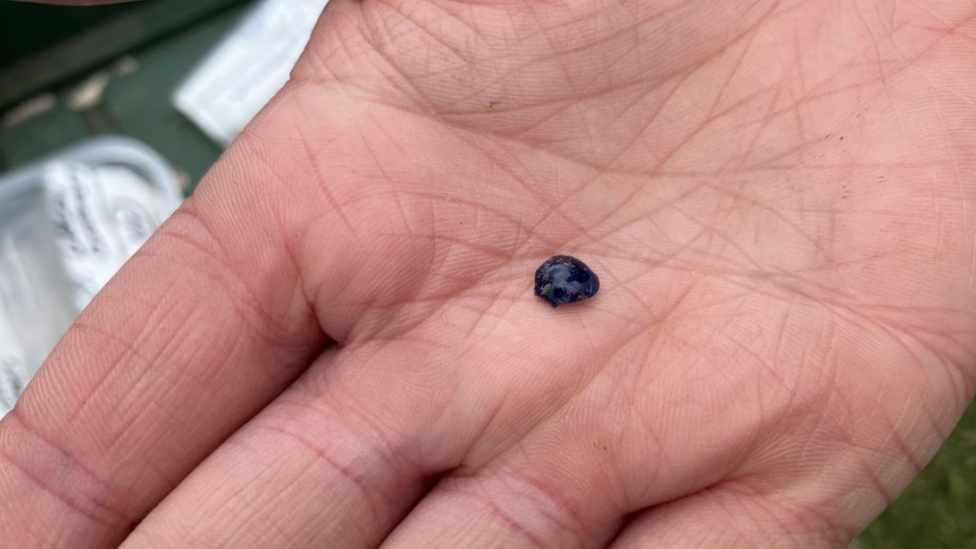
Katy was impressed by an early medieval blue glass bead that was found at the site
Last year's excavation went ahead after ground penetrating radar surveys carried out by Queen's University Belfast indicated stone features of interest.
The surveys were commissioned by Lurgan Township Heritage Scheme and funded in part by the Department for Communities' Historic Environment Division.
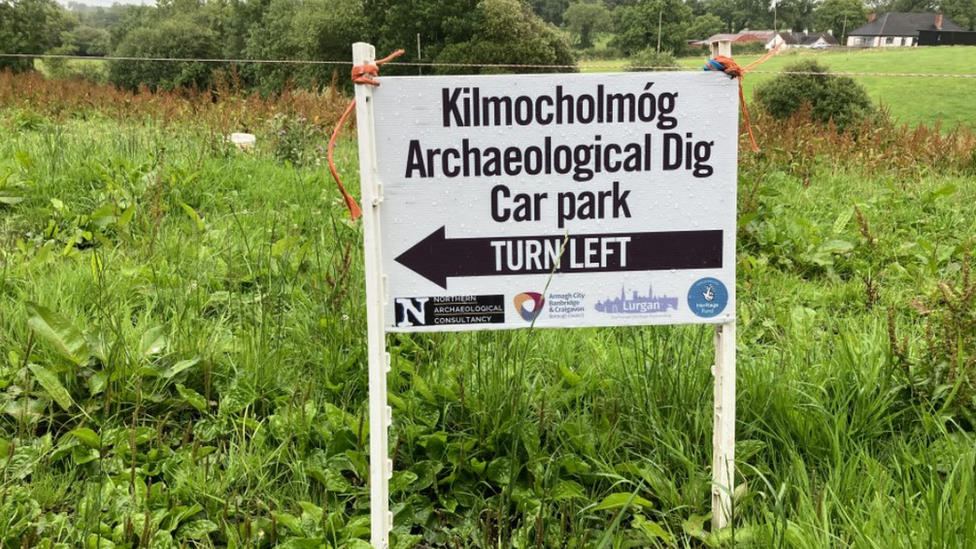
This is the second year of excavations at the County Armagh site
The latest archaeological dig ends on Friday.
Discoveries will then be scrutinised further for their significance.
After that the search for funding to permit a third dig at Kilmocholmóg will begin.
Related topics
- Published24 August 2022
